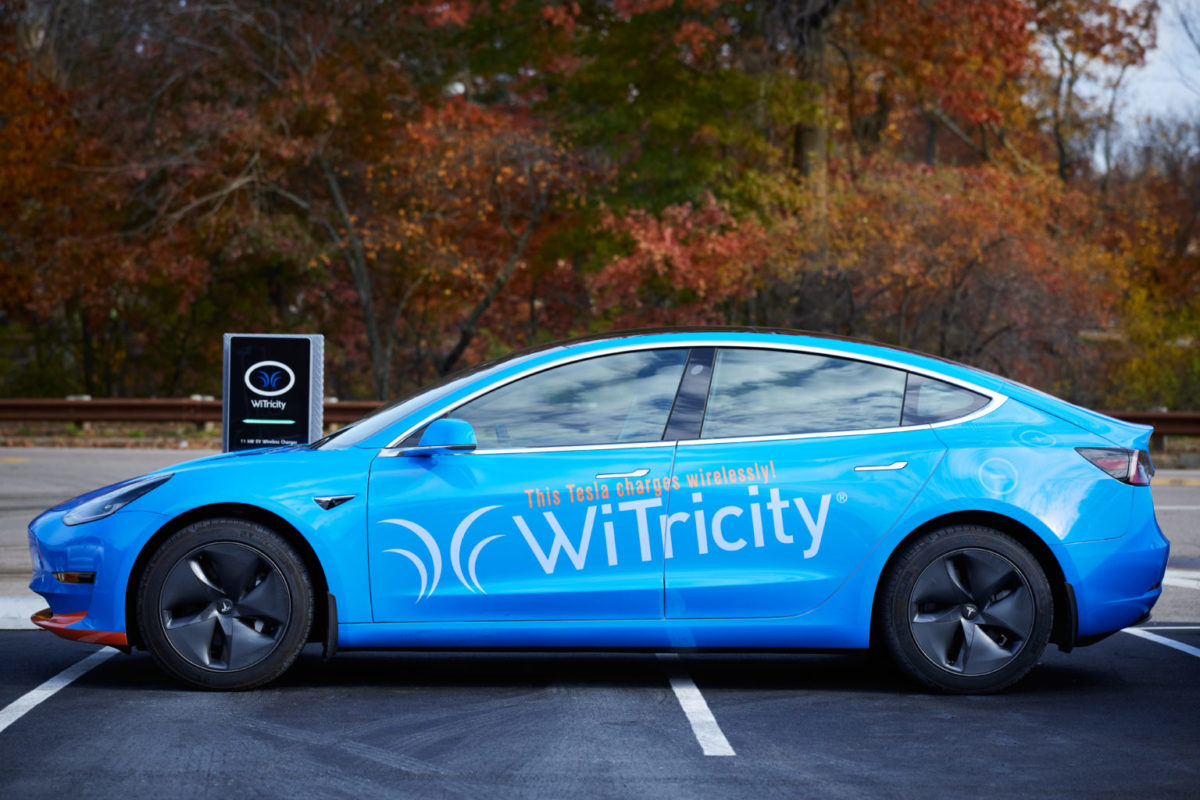From pv magazine USA
Electric vehicle owners may soon be able to simply park and charge, no wires needed, with a new product under development from WiTricity.
The company has announced a limited beta release of its Halo wireless charging station this year, with wider availability in 2023. WiTricity has already been providing EV automakers with factory-installed EV wireless charging tech, and it now plans to make a consumer-level aftermarket product.
The Halo system can deliver 11kW of wireless charging. It consists of three key components, including a power receiver installed on the vehicle, a wall box that connects to wired power, and a charging pad installed on (or in) the ground.
The system uses core magnetic resonance charging to power EVs. WiTricity’s charging system, peripheral systems, and controlling software have been awarded more than 1,200 patents. The technology is has been instrumental in developing global wireless charging standards, including SAE International, International Organization for Standardization (ISO), the International Electrotechnical Commission (IEC), and the Standardization Administration of the People’s Republic of China (GB).
A pilot Tesla Model 3 has been running fully on wireless charging in Watertown, Massachusetts, since October. The vehicle can be fully charged in less than six hours, which is just as fast as plugging in at home.
“Our successful upgrade of the Tesla Model 3 is resonating with consumers as an easier, more convenient way to charge their EVs,” said WiTricity CEO Alex Gruzen. “With the WiTricity Halo solution you just park and walk away, knowing you will return to a fully charged car. Day to day, it’s as if your car had infinite range, which will help accelerate EV adoption and propel us to a greener future.”
The company said it is currently evaluating which models to offer wireless upgrades for, based on customer demand, technical feasibility, and automaker support. Companies interested in the beta program can follow on the WiTricity website.
This content is protected by copyright and may not be reused. If you want to cooperate with us and would like to reuse some of our content, please contact: editors@pv-magazine.com.




There is only one thing to look for in this article, and it is the elephant in the room: what is the loss?
If the whole world are to start charging wirelessly, and the extra loss is 30%, it would be horrible for the environment.
PS Fred: elephant deux: how much solar energy hits the earth per hr.? Perhaps a partial mitigating factor for the vast majority of people that consider “filling up” too much trouble